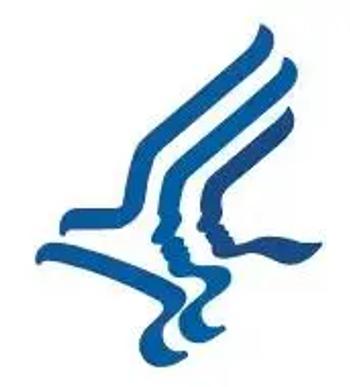
- April 2018
- Volume 3
- Issue 2
Actively Involving Nurses in Antibiotic Stewardship
Staff nurses are underused but potentially valuable contributors to antibiotic stewardship.
As clinicians, we share within our codes of ethics the obligation to avoid causing harm to our patients: to “abstain from whatever is deleterious and mischievous”.1 This could not be more relevant to the use—and misuse—of antibiotics (see Figure). A substantial proportion of antibiotics prescribed in hospitals,2,3 outpatient settings,4,5 and nursing facilities6 may be inappropriate or altogether unnecessary, leading to adverse drug reactions, Clostridium difficile (C. difficile) infection, and antibiotic resistance.7 Antibiotic stewardship programs (ASPs) have been at the forefront of the effort to curtail inappropriate antibiotic use.7
Historically, guidelines for developing and implementing ASPs largely recognized the need for an interdisciplinary team, including physicians, pharmacists, infection preventionists, microbiologists, and others.8-10 However, nurses have been frequently missing from mention in these publications.11 Fortunately, in recent years, the dialogue surrounding antibiotic stewardship has evolved to include nurses. Evidence of this can be found in guidance documents from the US Centers for Disease Control and Prevention, National Quality Forum,12 and American Nurses Association,13 in which nurses are acknowledged as key contributors to these efforts. Although this recognition is a step in the right direction, studies to demonstrate specifically how nurses can actively participate in antibiotic stewardship and quantify impact are limited.11,14
In January 2016, the idea of involving bedside nurses was brought before the antibiotic stewardship committee of our institution, Pomona Valley Hospital Medical Center, a 437-bed community hospital in eastern Los Angeles County, California. The ensuing dialogue mirrored the literature at the time: support and enthusiasm to involve nurses but uncertainty as to how specifically to engage them. From the discussion, a task force composed of staff nurses, nurse administrators, infectious diseases pharmacists, and infection preventionists was formed to devise a potential solution.
Six months later, a pilot program was launched: interdisciplinary rounds held twice weekly on a 31-bed telemetry unit. Staff nurses led the rounds, which were attended by a clinical pharmacist, an infection preventionist, and a nurse practitioner. The hospital antibiotic stewardship committee and medical directors of infectious diseases and infection control provided oversight. Rounds focused on antibiotic use, acid suppressant use, urinary catheters, and central venous catheters. Staff nurses would present their patients and applicable issues to the interdisciplinary team and discuss potential intervention, such as discontinuing or modifying antibiotic or acid suppressant therapy and discontinuing urinary or central venous catheters. The nurses would then communicate the agreed-upon interventions to their patients’ primary hospital provider.
The staff nurses proved to be an asset to the goals of the interdisciplinary rounds and fitting advocates of antibiotic stewardship. Their routine duties, including continuous monitoring of patient symptoms and responses to therapy, obtaining laboratory testing and receiving results, administering and reviewing medications, and assisting in the coordination of patient discharge, put them in an ideal position to perform timely intervention. Initially, the nurses’ assessment and intervention occurred just on days when interdisciplinary rounds were performed; however, many nurses eventually incorporated these activities into their daily work. Over time, nurses increasingly reported having discussions with prescribers regarding the necessity of antibiotics, acid suppressants, and invasive catheters at the time of order receipt, occasionally ensuring they were appropriately modified or discontinued when such action was agreed upon between nurse and prescriber. Examples of such scenarios included antibiotics for asymptomatic bacteriuria, invasive urinary or central venous catheters for inappropriate indications, and C. difficile testing in patients with diarrhea secondary to osmotic or stimulant laxatives.
A NURSE’S ACCOUNT OF THE ROUNDS
Implementing an antibiotic stewardship program (or anything that involves change, for that matter) into our telemetry unit was no easy feat. The key aspects that proved crucial were education and active learning. Change is never easy, especially when the nurses are given an additional task with the countless other checklists that are already in their minds. What the nurses did not recognize was their true potential and the value that they brought to the interdisciplinary team. Initially, there was pushback when we started rounds. Many nurses felt unsure if what they were reporting was necessary while figuring out the patient’s plan of care concurrently. Speaking to a physician regarding changes recommended by the team was an initially daunting task that occasionally led to dissidence. What most nurses did agree on, however, was the interdisciplinary team’s support and nonpunitive culture. Every encounter was a learning opportunity, which happened often if not always. Educating staff on what antibiotic stewardship meant and how this affected both them and their patients was crucial. As adult learners, the nurses needed to know how it was applicable to their practice. As they began to realize the difference they were making with their recommendations in their patients’ plan of care, the more value it brought to their personal practice. Collaborative efforts of the charge nurse and nurse champions also proved helpful as additional support to the staff.
“Antibiotic stewardship” was no longer a foreign term to the 31-bed telemetry unit. It had become a part of the nurses’ daily routine. Many nurses expressed their “new outlook” on their patient picture from a multidisciplinary perspective. Nurses proved to be more prepared during rounds, and feelings of nurse autonomy and confidence in their own practice was apparent. Over time, the medical staff became more receptive to the nurses’ recommendations and developed a sincere appreciation for them.
The trend of institutions achieving Magnet recognition has also encouraged nurse-led initiatives and empowerment to make a difference. Such professional development reflects not only upon the nurse but also—primarily—on the impact that ASPs have on patient outcomes.
(Editor’s note: This is a first-hand account from co-author, Mary Beth Forte.)
Today, the pilot is no longer a pilot. Preliminary results have since been published.15 The nurse-led antibiotic stewardship and infection prevention rounds have become a standard of practice at our institution and expanded to the 2 other telemetry units, with the continued attendance of clinical pharmacists and infection preventionists.
Patient safety and providing the best possible patient care are objectives that all clinicians share. Nurses are valuable contributors to antibiotic stewardship efforts but are widely underrecognized and thus underutilized for such roles. It is our hope that other institutions will actively involve their bedside nursing staff in antibiotic stewardship efforts, as well as share their approaches and outcomes, to shed more light on how best to partner with nurses to improve antibiotic use.
Dr. Ha is an assistant professor at the Keck Graduate Institute School of Pharmacy in Claremont, California, and an infectious diseases pharmacist at Pomona Valley Hospital Medical Center in California.
Ms. Forte is a staff nurse and antibiotic stewardship nurse lead at Pomona Valley Hospital Medical Center and part-time faculty at California State University, Fullerton, School of Nursing.
References:
- Florence Nightingale pledge. The Online Journal of Issues in Nursing website. ojin.nursingworld.org/FlorenceNightingalePledge-2017. Accessed February 24, 2018.
- Ingram PR, Seet JM, Budgeon CA, Murray R. Point-prevalence study of inappropriate antibiotic use at a tertiary Australian hospital. Intern Med J. 2012;42(6):719-721. doi: 10.1111/j.1445-5994.2012.02809.x.
- Fridkin S, Baggs J, Fagan R, et al; Centers for Disease Control and Prevention (CDC). Vital signs: improving antibiotic use among hospitalized patients. MMWR Morb Mortal Wkly Rep. 2014;63(9):194-200.
- CDC. Office-related antibiotic prescribing for persons aged ≤ 14 years—United States, 1993-1994 to 2007-2008. MMWR Morb Mortal Wkly Rep. 2011;60(34):1153-1156.
- Fleming-Dutra KE, Hersh AL, Shapiro DJ, et al. Prevalence of inappropriate antibiotic prescriptions among US ambulatory care visits, 2010-2011. JAMA. 2016;315(17):1864-1873. doi: 10.1001/jama.2016.4151.
- Nicolle LE, Bentley DW, Garibaldi R, Neuhaus EG, Smith PW. Antimicrobial use in long-term-care facilities. SHEA Long-Term-Care Committee. Infect Control Hosp Epidemiol. 2000;21(8):537-545. doi: 10.1086/501798.
- CDC. Core elements of hospital antibiotic stewardship programs. CDC website. cdc.gov/antibiotic-use/healthcare/implementation/core-elements.html. Updated February 23, 2017. Accessed February 24, 2018.
- Marr JJ, Moffet HL, Kunin CM. Guidelines for improving the use of antimicrobial agents in hospitals: a statement by the Infectious Diseases Society of America. J Infect Dis. 1988;157(5):869-876.
- Shlaes DM, Gerding DN, John JF, et al. Society for Healthcare Epidemiology of America and Infectious Diseases Society of America Joint Committee on the Prevention of Antimicrobial Resistance: guidelines for the prevention of antimicrobial resistance in hospitals. Clin Infect Dis. 1997;25(3):584-599.
- Dellit TH, Owens RC, McGowan JE, et al; Infectious Diseases Society of America, Society for Healthcare Epidemiology of America. Infectious Diseases Society of America and the Society for Healthcare Epidemiology of America guidelines for developing an institutional program to enhance antimicrobial stewardship. Clin Infect Dis. 2007;44(2):159-177. doi: 10.1086/510393.
- Olans RN, Olans RD, DeMaria A. The critical role of the staff nurse in antimicrobial stewardship—unrecognized, but already there. Clin Infect Dis. 2016;62(1):84-89. doi: 10.1093/cid/civ697.
- National Quality Forum. National quality partners playbook: antibiotic stewardship in acute care. www.qualityforum.org/Publications/2016/05/National_Quality_Partners_Playbook__Antibiotic_Stewardship_in_Acute_Care.aspx. Published May 2016. Accessed December 6, 2017.
- American Nurses Association and Centers for Disease Control and Prevention. Redefining the Antibiotic Stewardship Team: Recommendations from the American Nurses Association/Centers for Disease Control and Prevention Workgroup on the Role of Registered Nurses in Hospital Antibiotic Stewardship Practices. https://www.cdc.gov/antibiotic-use/healthcare/pdfs/ANA-CDC-whitepaper.pdf. Published 2017. Accessed December 6, 2017.
- Edwards R, Drumright L, Kiernan M, Holmes A. Covering more territory to fight resistance: considering nurses’ role in antimicrobial stewardship. J Infect Prev. 2011;12(1):6-10. doi: 10.1177/1757177410389627.
- Ha D, Forte MB, Nguyen K, et al. Outcomes of bedside nurse-driven interdisciplinary antibiotic stewardship and infection prevention rounds. Open Forum Infect Dis. 2017;4(suppl 1):S487. doi: 10.1093/ofid/ofx163.1252.
Articles in this issue
over 7 years ago
Drug-Resistant Gonorrhea and Other Emerging Issues in STIsover 7 years ago
Long-Acting Anti-MRSA Agents: One Dose to Cure?Newsletter
Stay ahead of emerging infectious disease threats with expert insights and breaking research. Subscribe now to get updates delivered straight to your inbox.




